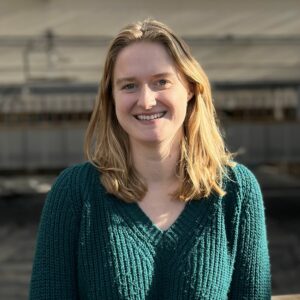Research
Research
This project will focus on achieving and understanding Resonant Catalysis. Currently, catalyst research is focused on changing the composition and structure of the catalyst to achieve better reaction performances. However, the activity of the catalyst has a maximum (described as the well-known Sabatier maximum), because the interaction of the reaction intermediates with the catalyst (adsorption/desorption) must be balanced: not too strong and not too weak, but just right. This is a compromise.[1] An emerging approach to overcome this limit is Resonant Catalysis (RC). In RC, catalysts are stimulated by an intermittent stimulus, such as light, mechanical stress or electric fields, at high frequency (Hz-MHz), in order to change the interaction with reaction intermediates at the time scale of the reaction itself, so that the activity is not limited by a specific step of the reaction. RC theory predicts an enhancement in catalytic performance up to 3 orders of magnitude above the maximum predicted by the Sabatier principle, which can make prospective sustainable technologies more economically feasible![2]
Despite these promising predictions, only mild (up to 2 times) enhancement in catalytic activity has been shown experimentally so far by intermittent stimulation, because the stimulus-catalyst interactions are not well understood and the choice for stimulation parameters was so far based on trial and error.[3] Therefore, this project is focused on developing fast operando infrared (IR) spectroscopy tools (with a high time-resolution of up to 109 Hz, ns) to observe what happens during pulsed light stimulation on the catalyst at work. We will focus on the CO2-to-methanol (MeOH) reaction because of societal relevance and existing challenges in catalytic performance.[4] The overall outcome will be new insights in the relationship between the light stimulation parameters, catalytic performance, and the type and dynamics of the reaction intermediates formed during stimulated catalysis in the CO2-to-MeOH reaction and finally to boost activity by a factor of 10 with respect to continuous illumination.
References:
[1] Nat. Rev. Mater. 2019, 4, 792-804.
[2] ACS Catal. 2020, 10, 12666-12695.
[3] ACS Energy Lett. 2020, 5, 3518-3525.
[4] Appl. Energy 2021, 303, 117637.
C.V.
C.V.
2023 – present
PhD candidate at the Inorganic Chemistry and Catalysis research group.
2020-2023
Master’s degree Nanomaterials Science, Utrecht University
Master thesis: “Intermediate Sensing during Catalytic CO2 Hydrogenation with Shell-Isolated Nanoparticle Enhanced Raman Spectroscopy.” Performed at the Inorganic Chemistry and Catalysis research group, supervised by Thimo Jacobs, MSc. and Angela Melcherts, MSc. and dr. Ward van der Stam.
Master internship abroad: “The Influence of Support on Total Reflection FT-IR Pigment Spectra.” Performed at the Spectroscopy Applied to Cultural Heritage research group at IFAC-CNR Institute of Applied Physics in Florence, Italy, supervised by dr. Marcello Picollo and dr. Matteo Monai.
2016 – 2020
Bachelor’s degree Chemistry, Utrecht University
Bachelor thesis: “Formation of CdSe Nanoplatelets Studied with ICP-OES.” Performed at the Condensed Matter & Interfaces research group, supervised by dr. Annelies van der Bok and Prof. dr. Andries Meijerink.
News
ICC runs the singelloop
“Mens sana in corpore sano” – a healthy mind in a healthy body In order to do great research, we also need to look after our (mental) health. Last sunday […]
Read more
